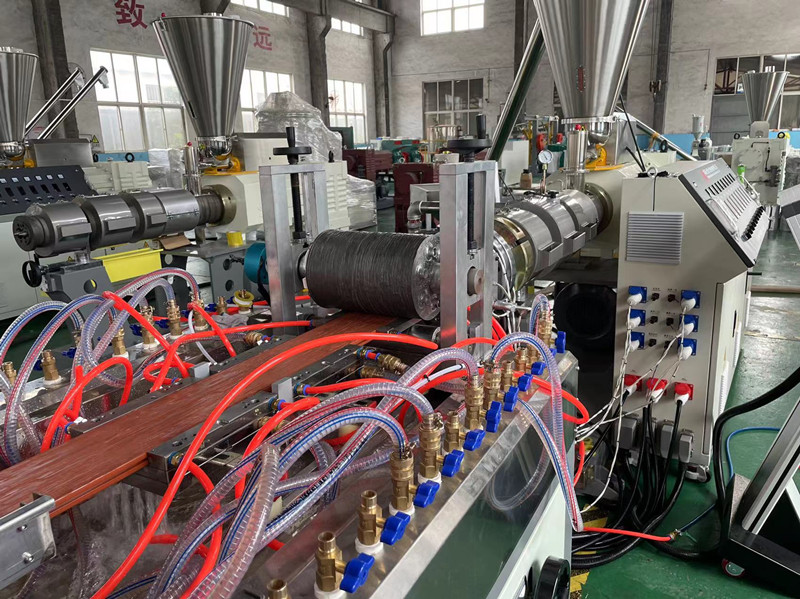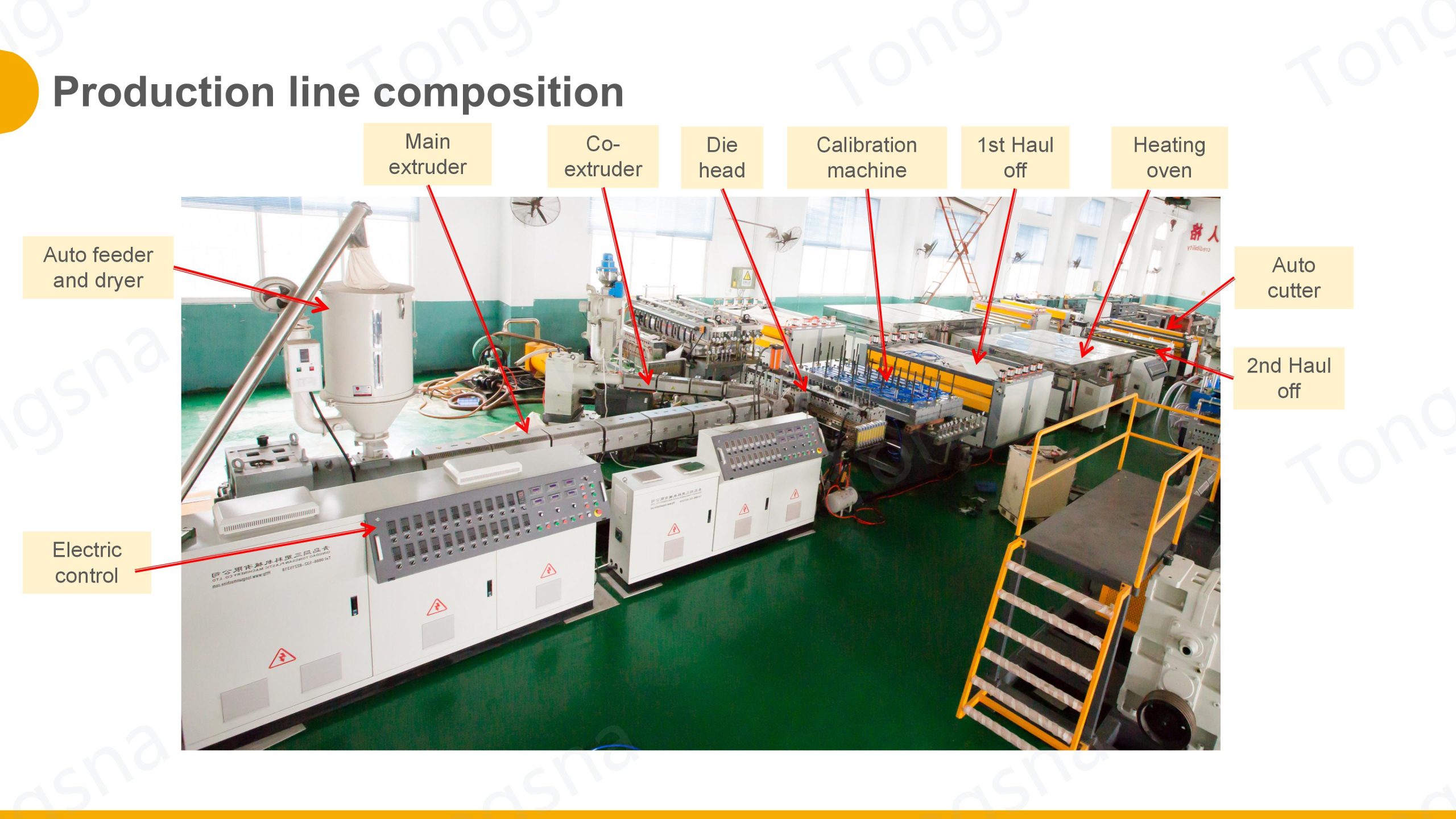Pros and Cons of Wood Plastic Composite Machines
In order to determine the feasibility of wood plastic composite manufacturing, it is important to understand its advantages and disadvantages. There are several factors to consider, including applications, cost, and dimensional stability. Read on to learn more. Listed below are the Pros and Cons of wood plastic composite machines. The advantages of wood plastic composite manufacturing should be considered before making the decision to purchase these machines. These machines are used in a variety of industries, including the automotive industry, building industry, and construction.
Disadvantages of wood-plastic composites
There are advantages and disadvantages of wood-plastic composite machines. For one, the process of making these machines is similar to that of conventional plastic machines. Wood-plastic composites have the added benefit of environmental sustainability. In contrast, conventional plastic is petroleum-based and often contains a high degree of contaminants. Therefore, a wood-plastic composite machine must be equipped with an adequate amount of protective coatings and antimicrobial properties.
As the materials produced by wood-plastic composite machines are similar to those of conventional plastics, tooling is compatible with them. This compatibility makes the process of wood-plastic composite machines easier. Moreover, the pellet size of wood-plastic composites is also similar to conventional plastics, making the process faster. Moreover, since wood-plastic composites are made of organic fillers, existing machinery is compatible with them. However, the size of the pellets and the positioning of the gate are some of the things that should be taken into account when selecting wood-plastic composite machines.
Wood-plastic composite machines have various drawbacks. They require expensive machinery and require specialized expertise. These machines cannot be used in small-scale production. The machine must be equipped with the appropriate tools and machinery to create uniform pellets. The wood-plastic composite machines must have sufficient drying and gate systems to ensure consistent and uniform quality. It should also have a straight processing pathway for the composite materials. However, the disadvantages of wood-plastic composite machines are negligible in comparison to those of other thermoplastic materials.
Thermal treatment of wood is a process to condition the wood fibers and enhance their mechanical properties. Thermal treatment increases the stiffness and ductility of the composite materials. Wood-plastic composite machines can be brittle, so hot water extraction is necessary to remove excess water. However, the thermal treatment also reduces their elasticity. It is therefore important to keep these aspects in mind when purchasing these machines.
Applications
While traditional materials like wood are still popular in the construction industry, newer materials like wood-plastic composites have many benefits over traditional wood. Wood-plastic composites have the same aesthetic qualities as real wood, but with many advantages. They’re more durable and can withstand high moisture content without being damaged by water. They’re also environmentally friendly and do not contain any harmful substances, making them an excellent choice for many applications.
In terms of processing, WPCs are most often produced at lower temperatures than conventional materials. In fact, they can process at just 28 degC (70 degF) compared to their unfilled counterparts. When processed at high temperatures, however, they become vulnerable to burning and shearing. The high temperatures also result in discoloration. The melt flow index of the composite depends on the ratio of wood to plastic. Larger proportions of wood make for a lower MFI.
While wood plastic composite is often made with plastics, the materials that go into making it are not interchangeable. Using thermoplastic forming techniques, wood plastic composite can be produced in countless products. In fact, wood plastic composite machines are already used in a variety of settings. Wood-plastic composite machines are ideal for creating wood-plastic products like railings and profiles. They can be treated the same way as conventional lumber.
Wood-plastic composite machines are used for a wide range of applications, from high-end decorative molding to sandstone countertops. They can be combined with wood flour at ambient moisture levels and polymer in its natural state. A co-rotating twin screw or hot melt single screw is used to produce wood-plastic composite profiles. Gravimetric feeders are preferred over twin-screw side feeders. The screw speed controls the mixing process.
Cost
If you’re in the market for a machine to produce WPC, there are many factors that will determine the price you’ll pay for one. While the initial cost of a wood plastic composite machine may be high, the cost of running and maintaining one is minimal, and the payback period is three to five years. You can buy these machines from a company that specializes in the production of composite materials. Read on to find out more about these machines and how to get the best value for your money.
Wood-plastic composite machines are becoming increasingly popular as building materials. These products are made with PVC, PP, PE, PS, ABS, and various plant fibers. They can be recycled and are cost-effective for the building industry. Typical applications for WPC machines include floor coverings, door and window covers, guardrails, and kicking lines. The machines’ costs can vary depending on the size of your project.
Once you have decided on the type of wood-plastic composite machine you need, the next step is determining the budget. While wood-plastic composite machines are expensive, you can save money on their maintenance and operating costs by buying a second-hand machine. This machine can be used to produce all sorts of wood-based products, including furniture. Wood-plastic composite materials are also more durable than wooden flooring and are resistant to insects.
Wood plastic composites are a revolutionary type of construction material, and have been gaining popularity worldwide. While wood-based composites are still gaining popularity, they are able to improve the building industry by promoting coordinated development. However, despite the potential of WPCs, there are several shortcomings that must be resolved. While they are largely biodegradable, they still do not have good flame resistance or biological resistance.
Dimensional stability
Many outdoor products are made from wood-plastic composites. The outer WPCs have high dimensional stability when subjected to short-term resistance tests. Wood meals are also acetylated for dimensional stability and biological durability. In addition, acetylation is a promising technique for preparing WPC materials. This method has been used successfully in a variety of applications. This article examines its advantages and disadvantages.
Wood flour can enhance the stiffness and elongation to break properties of PCL. Wood flour is also an effective reinforcement agent. Poly(3-hydroxybutyrate) is used as a matrix in WPC. In addition to wood flour, Singh and Mohanty examined the interaction between wood fibers and polyhydroxybutyrate-co-valerate (PHBV).
In this study, WPG is found to be insignificant in the bending strength of WPCs. The presence of MAPP enhanced the bending strength of the composites at all WPG levels. It also enhanced interfacial interactions and ester bonds, resulting in greater tensile strength. Furthermore, MAPP enhanced the tensile strength of WPCs at all WPG levels. The ratio of WPG levels decreased from 31.1 MPa to 21.3 MPa.
Wood-plastic composites require drying before packaging. Failure to do so will lead to the product degrading and molding. So, demand for low moisture content from suppliers. The temperatures at which wood-plastic composites are processed are different from those used for conventional plastics. Conventional plastics can’t be successfully ejected from molds at high temperatures. With wood-plastic composites, this is possible.
Tooling for the production of wood-plastic composites is similar to that of conventional plastics. Any changes made to the existing tooling can be easily implemented by modifying it. It is important to consider the wood-plastic composite’s gate size and positioning. A standard extruder can be used for pellet production. And because it is compatible with conventional plastics, it makes converting wood-plastic composites a very flexible process.
Environmental impact
Wood-plastic composites are a new material gaining popularity because they are environmentally friendly and can help reduce plastic pollution. Traditionally, plastics have been made from oil-based materials, like petroleum. However, increasing use of these materials has lead to pollution issues. This has led scientists to explore alternatives and are developing new materials that combine these materials with natural materials. For instance, a new material called wood-plastic composites can be made from sawdust, a byproduct of wood mills.
When comparing environmental impacts of plastic pallets to wood-plastic composites, the former shows the least impact in most categories. The latter has the highest impact because of the use of fossil fuels, especially in the production phase. Wood-plastic composites show minimal environmental impact, and plastic pallets have the greatest impact in all categories, except the maintenance phase. Compared to the latter, the former has the lowest environmental impact in both categories, although the plastic pallet has the highest energy consumption in the production phase.
Wood plastic composite is a natural building material made of a blend of wood and plastic fibers. It is an environmentally friendly building material that can withstand heat and moisture. Furthermore, it does not contain harmful chemicals and can be used in many construction applications. Its durability and low maintenance costs allow for it to be widely used in a variety of applications. Moreover, it can be molded into any shape or size and colored to fit any design scheme.
The environmental benefits of wood-plastic composites have been widely recognized. These materials have reduced melting temperatures, resulting in lower costs for producers. They also reduce the environmental impact of the products, as they don’t require wood treatment and can be used with existing tooling. They can also be produced from wood scrap, which has no chemical properties that make them hazardous. This makes wood-plastic composite machines a green alternative. It is also an environmentally friendly material that is more cost-effective than other plastic materials.


